National Museum of Iran: Iranian Largest Archeological Museum
If you are looking to witness the history of Iran - from the Stone Age to the 20th century. Visit the National Museum of Iran.
The National Museum of Iran, also known as the Museum of Ancient Iran, is the largest archaeological museum in Iran due to its variety of historical works from different periods of Iranian history before and after Islam.
The National Museum of Iran consists of two buildings: One of the buildings is the Museum of Ancient Iran, which exhibits ancient Iranian antiquities before the Islamic era. The other is The Museum of the Islamic Archaeology and Art of Iran, displaying Islamic objects, monuments, and artworks.
It has over 300,000 rare objects on display representing various cultural periods from stone-age times to Cyrus, Darius, and the mighty Persian kingdoms. You can also find objects, including stunning collections of sculptures, carvings, pottery, ceramics, and stone figures dating back to the 4th and 5th centuries B.C. One of the must-see collections in the museum are the trilingual inscription from Darius I, the human-headed capital from Persepolis, and the mesmerizing cuneiform inscriptions.
Join us to learn everything you need to know about the National Museum of Iran, including its history, architecture, opening time, ticket price, location, and how to get there.
History of the National Museum of Iran
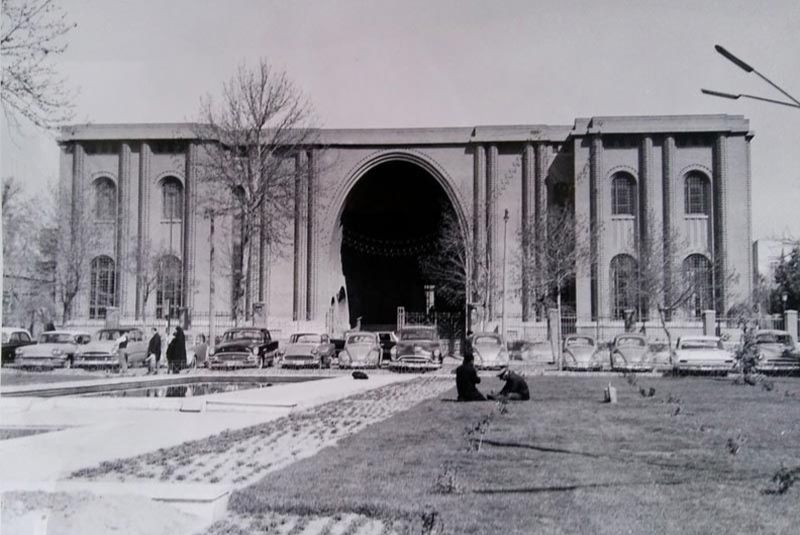
The National Museum of Iran has a rich and intriguing history. The concept of establishing the National Museum of Iran was initially proposed during the constitution period by Sani al-Dawlah, but it was not realized until the reign of Ahmad Shah Qajar. It was Morteza Khan Momtaz al-Mamalek, the Minister of Education at the time, who spearheaded the efforts to collect a range of objects and house them in a room of Darolfonoun school, thus giving birth to the National Museum.
In 1925, during the first Pahlavi era, the museum was relocated to the Mirror Hall of Masoudieh mansion in Baharestan Square. The collection at that time comprised 15 pieces of antique metal objects, 158 pieces of tile, pottery, and glass, 9 coins, 54 pieces of ancient weaponry, and artifacts from archaeological excavations, as well as donations from private collectors.
The construction of the Museum of Ancient Iran, now known as the National Museum of Iran, began in 1935 under the guidance of André Godard, a renowned French architect. Collaborating with Iranian architects Haj Abbas Ali Memarbashi and Morad Tabrizi, Godard designed the museum in the western part of Masgh Square.
It was originally known as the National Museum, it later became the Museum of Knowledge before being renamed the Museum of Ancient Iran when it was housed in its current location. However, in 1996, with the establishment of the Museum of Islamic Era, it was officially renamed the National Museum of Iran.
| Related: Top 23 Museums in Iran + Photos
National Museum of Iran Architecture
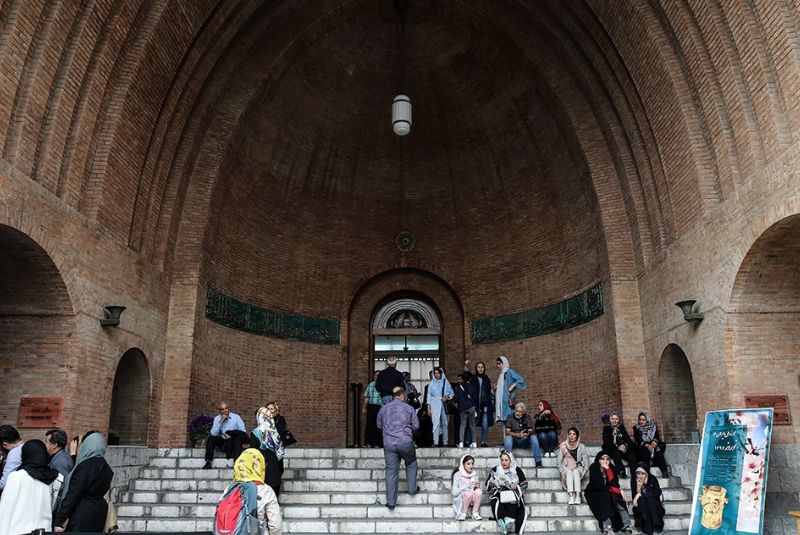
The National Museum of Iran has a fascinating architecture. The museum's main building covers an impressive area of 11,000 square meters, situated on a land allocation of 5,500 square meters. It was designed by the renowned French architect André Godard.
The museum's architecture takes the shape of a rectangular cube, consisting of three distinct sections. The entrance is adorned with a magnificent Sassanid arch and serves as the focal point, emphasizing the grandeur of the museum. The exterior walls are made of red bricks reminiscent of the palaces in Firouzabad, adding to the overall sense of splendor within the urban landscape.
One of the most striking features of the museum's design is the entrance space, which stands out within the large cube volume. The main entrance leads visitors into the spacious halls, creating a captivating contrast in scale compared to the grand and majestic main entrance.
Ascending the stairs from the entrance, visitors reach the ground floor, where the cylindrical roof becomes a remarkable highlight. Godard's skillful design is evident in the brick patterns on the ceiling's surface, creating a sense of movement and harmony. The walls and roof blend seamlessly, forming a cohesive architectural entity that showcases the interplay between form and technology.
| Related: Best Museums in Tehran - Definitive Guide
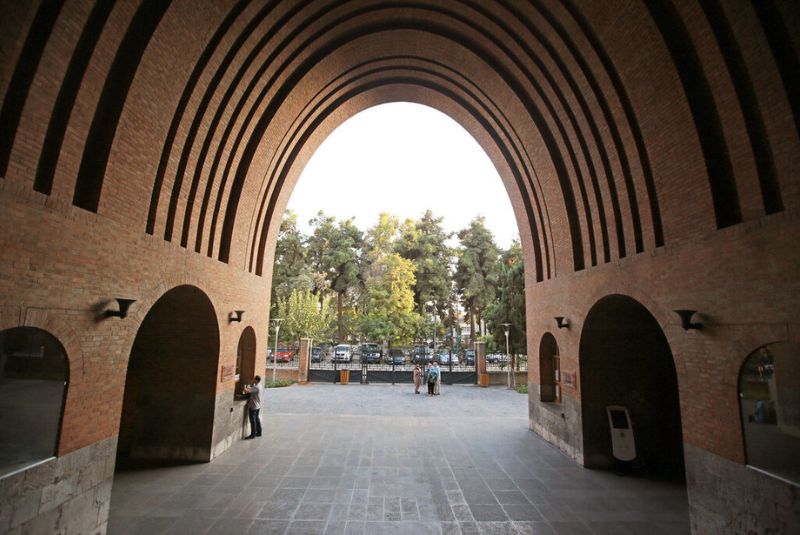
The museum's main hall spans an impressive 61 meters in length and 34 meters in width and provides a surface area of 2,000 square meters. It features two indoor skylights measuring 16x16 meters, allowing natural light to illuminate the space. The eastern and western walls are adorned with narrow, long windows, creating a rhythmic pattern that complements the main walls. These windows, along with the skylights, ensure ample lighting for displaying the objects. However, the absence of windows on the top level creates a somber atmosphere, evoking a sense of nostalgia and contemplation among visitors.
In 1996, the Museum of the Islamic Era was officially separated from the Museum of Ancient Iran and relocated to an adjacent building. The National Museum of Iran in Tehran now encompasses both museums, offering a total infrastructure of over 20,000 square meters and housing roughly 300,000 objects.
Different Sections of the National Museum of Iran
The National Museum of Iran consists of two buildings: One of the buildings is the Museum of Ancient Iran and the other is The Museum of the Islamic Archaeology and Art of Iran. Let's look into each one of them below:
Museum of Ancient Iran
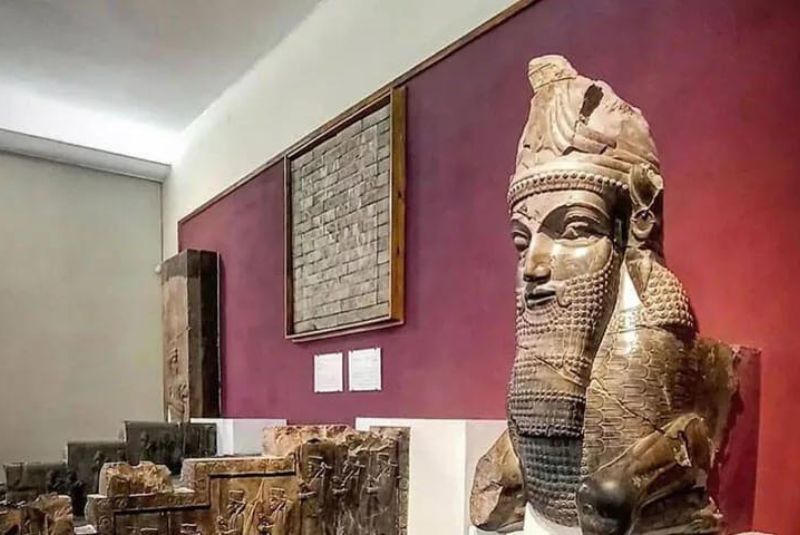
The Museum of Ancient Iran was constructed over four years in four stages starting from 1935. Its distinct red brick decoration presents a horizontal rectangular structure, consisting of three interconnected sections.
The architecture of the building was inspired by the grandeur of the Sassanid Palace of Ctesiphon and the renowned Kasra Arch. The entrance boasts a veranda with a crescent-shaped arch, adorned with shadows, backlogs, and captivating brick patterns. Two two-story buildings on either side house the library, exhibition halls, and conference rooms, while a marble inscription with a poem by Bahar Malik al-Sha'ara graces the top of the entrance. The Museum of Ancient Iran's exhibits are divided into two sections over two floors.
|Also read about: Tehran Museum of Contemporary Art
First Floor
The first floor showcases the Prehistoric Era, allowing visitors to embark on a journey through time from the ancient Paleolithic period to the end of the fourth millennium BC. Notable highlights include stone tools, pottery from significant archaeological sites, clay figurines of humans and animals, and replicas of flint hill clay.
Ground Floor
Moving to the ground floor, visitors delve into the rich historical period of Iran. From the late fourth millennium BC, marking the advent of writing, to the end of the Sassanid period, this section displays remarkable artifacts. Visitors can marvel at treasures such as the world's oldest animation on pottery from the Burnt City, the statue of Darius I, the bronze statue of the Zavi Shami man, and the famed salt man from the Zanjan mine.
The Museum of the Islamic Archaeology and Art of Iran
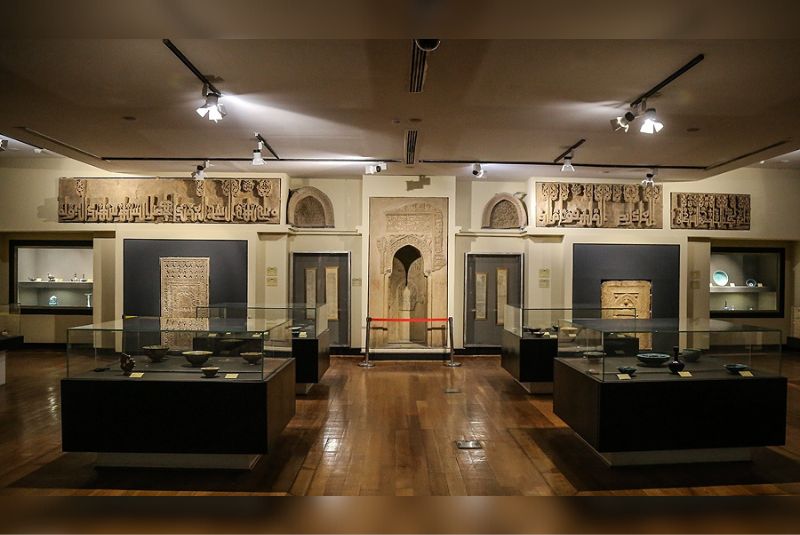
The Museum of the Islamic Archaeology and Art of Iran is an impressive institution that showcases the rich cultural heritage of the Islamic era. Originally designed in 1933 by Eugene Aftandillian, in collaboration with André Godard, as an anthropological museum, its purpose shifted in 1954 to administrative applications and temporary exhibitions. As a result, the collection of Islamic art was displayed on the second floor of the Museum of Ancient Iran. Recognizing the importance of this period, and with a desire to meet educational and research needs, an independent museum was established. Following modifications, equipping, and the transfer of artworks, the Museum of the Islamic Era officially opened on October 23, 1996.
The museum's design was inspired by the Bishapur Sassanid Palace, featuring an impressive octagonal crucifix structure. In the 1980s, the museum underwent renovations and improvements to enhance installations, expand spaces, and revise the display of artworks. After these enhancements, the museum reopened its doors to the public in 2015. Spanning an area of 4,000 square meters across three floors, the museum is located adjacent to the Museum of Ancient Iran.
| Also read about: Tehran Music Museum
Ground Floor
The ground floor of the Museum of the Islamic Era is dedicated to an auditorium and a temporary exhibition hall. The exhibits can be found on the first and second floors, organized according to a historical timeline in seven halls and 170 showcases. Many of the objects on display have been sourced from scientific excavations and prestigious collections, including the Museum of Ancient Iran and Sheikh Safi al-Din Ardebili collections.
Second Floor
The journey through the museum begins on the second floor, which covers the period from the beginning of Islam to the Ilkhanid dynasty. The halls on this floor showcase various artifacts such as deer-skin Qurans from the early Islamic period, pottery from Nishapur and Kashan, ancient hand-woven textiles from Rey and Isfahan, glassware from Gorgan, plasterwork and bricks from the Seljuk period, magnificent golden dishes, great altars from the Ilkhanid era, and manuscripts such as Maslak and the Lands and the Five Military Treasures.
First Floor
The first floor of the museum encompasses the Timurid, Safavid, Afsharid, Zand, and Qajar periods. Visitors can explore halls dedicated to the Qur'an, Timurid design and painting, Safavid Zarbaft carpets, Zand and Qajar paintings and lacquers, coffee house paintings, as well as wood and steel inlay and mirror work from the Qajar era.
Quran Hall
One notable highlight is the Qur'an Hall, situated under the central dome on the first floor. This space is solely dedicated to showcasing Qurans, some of which date back to the early centuries of Islam and are written on deer skin. An intriguing example is the additive digit of 'Ali ibn Abi Talib (a). The Qurans in this hall are written in various scripts, including Kufi, Manuscripts, Basil, Mohaqiq, and Dust. The centerpiece of this hall is a page from the magnificent Quran by Baysongr Mirza, which Nadir Shah carried during his battles to boost the morale of his troops. Some pages of this Quran were unfortunately damaged by fire, while others are preserved in different museums.
| Discover: Royal Car Museum in Tehran with Vintage Car Collections
Other Facilities of the National Museum of Iran
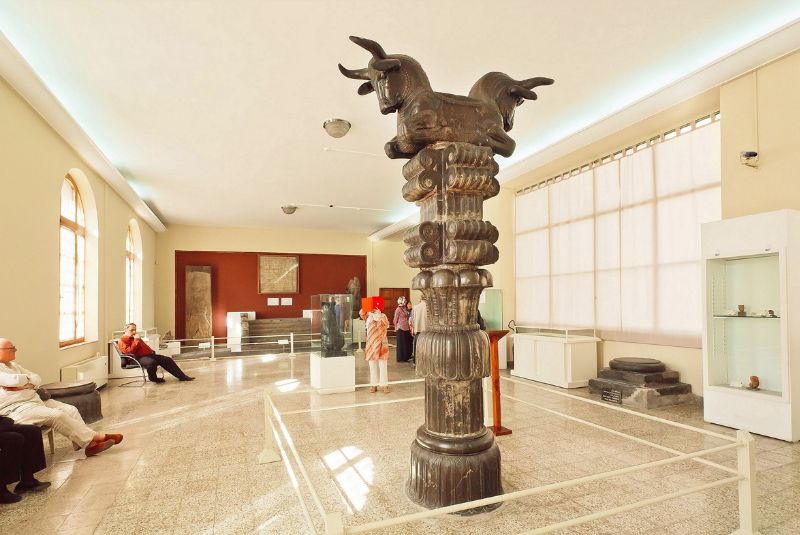
The National Museum of Iran offers additional facilities to enhance visitors' experience. The museum houses the National Museum of Iran Library, a significant resource for archaeology and history enthusiasts. It contains a vast collection of manuscripts and lithographs, including notable works like the Assembly of Al-Fas, Naskh al-Tawarikh, and lithography of the Holy Quran, primarily from the Qajar period.
Moreover, within the museum premises, there is a handicrafts gallery where visitors can explore and purchase traditional Iranian handicrafts, providing an opportunity to take home a piece of Iranian culture.
For a refreshing break, the National Museum of Iran also features a café restaurant. After delving into the depths of Iranian history, visitors can relax and enjoy a cup of tea or coffee at the museum's café, allowing for a leisurely and enjoyable experience.
| Read more: Farshchian Museum
National Museum of Iran Ticket Price

The National Museum of Iran offers affordable ticket prices for visitors. For domestic visitors, the ticket price is 10,000 Tomans, while foreign visitors can enter by purchasing a ticket priced at 100,000 Tomans. These ticket prices provide access to both the Museum of Ancient Iran and the Museum of Archaeology and Art.
| Discover: Iranian Art Museum Garden - Tehran Miniature Marvel
National Museum of Iran Location
The National Museum of Iran location is between the Imam Khomeini and Hassan Abad metro stations. It is in the heart of Tehran and serves as a focal point for tourists exploring the city's popular attractions. Within walking distance from the museum, visitors can explore the City Park, Tehran Peace Museum, Moghadam Museum, Sardar-e Bagh-e Melli, National Jewelry Museum, and Golestan Palace.
National Museum of Iran Address: No. 1, Professor Rollen Street at the beginning of Si-e Tir Street(30 Tir Street), Imam Khomeini Street, Imam Khomeini Square, Tehran.
How to Get to the National Museum of Iran
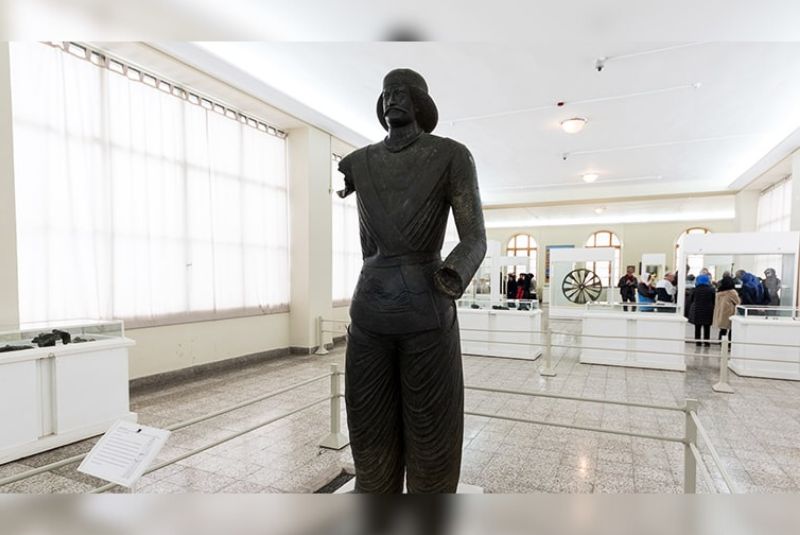
You can get to the National Museum of Iran using various transportation options including:
By Metro
The museum is conveniently located between two metro stations, namely Hassan Abad and Imam Khomeini. A pleasant walk of 7 to 10 minutes from either station will lead you to the museum.
On Foot
If you are exploring nearby attractions, you can reach the National Museum of Iran by foot from Malek Library and Museum, Sardar-e Bagh-e Melli, or Moghadam Museum. Enjoy a leisurely stroll through the city as you make your way to the museum.
By Car
For those traveling by car, Imam Khomeini Square serves as a useful landmark. From there, follow Imam Khomeini Street, and you will find the museum. Conveniently, there is a large parking area at the beginning of 30th Tir Street, located in close proximity to the museum.
| National Museum of Iran Website: www.irannationalmuseum.ir
Bottom Line
The National Museum of Iran is the largest archaeological museum in Iran. With its diverse collection spanning from ancient Iran to the Islamic era, the museum offers a captivating journey through time. From the impressive architecture to the carefully curated exhibits, visitors are immersed in the beauty and significance of Iranian art, archaeology, and history. The additional facilities, such as the library, handicrafts gallery, and café restaurant, further enhance the visitor experience. So, if you're a history enthusiast, art lover, or simply curious about Iran's past, the National Museum of Iran is a must-visit destination that will leave you with a deeper appreciation for this extraordinary civilization.
Share your story!
Comment below and let us know about your Experience.
Your story inspires others!


Comment
Leave a Comment